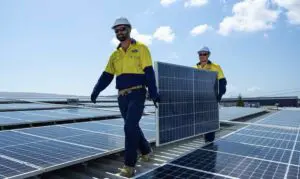The Energy Security Board (ESB) has delivered its final set of recommended electricity market reforms to Australia’s energy ministers, while conceding that the final details of the largest re-design of the National Electricity Market may not be known for another 18 months.
The further wait, coming on top of years of work by key regulators, leaves energy market participants, including electricity retailers, generators and major investors, in the dark about how the redesign might impact the future of Australia’s largest market for electricity and its transition to renewables that is already well underway.
According to a media statement issued by federal energy minister Angus Taylor, last week’s meeting of energy ministers agreed that the advice provided by the ESB on its recommended energy market reforms should be released to the general public.
This includes a landmark proposal to establish a new capacity market within the National Electricity Market that could fundamentally reshape the future of Australia’s electricity system.
“Ministers agreed it is important to release the ESB’s final advice documents in relation to its recommendations to inform public discussion of these recommendations,” Taylor said in a statement on Friday.
As of Tuesday, no information about the proposed reforms had been officially released.
However, according to correspondence seen by RenewEconomy, the ESB has so far delivered only a “high level indicative evaluation of a potential capacity mechanism” to energy ministers on electricity market reforms – including the need to establish a dedicated capacity market within the National Electricity Market – and has left much of the finer detail still to be worked out.
With leaked information confirming that the ESB has recommended the creation of a capacity market, the lack of resolved design decisions has raised fears that such a mechanism could ultimately serve as a way to prop up ageing coal and gas generators that are already seeing their financial viability eroded by the growth of lower cost supplies of wind and solar power.
Such a concern has been raised by ACT energy minister Shane Rattenbury, in a letter seen by RenewEconomy to the ESB. Rattenbury told the ESB that a number of energy market participants had raised concerns about the impact of a new capacity market and the potential for such a mechanism to be used to “perpetuate operation, and delay the orderly market exit, of thermal electricity generation.”
Rattenbury wrote to the ESB to seek assurances that the final design of a capacity market would not keep coal and gas generators operating longer than was needed to ensure reliable supplies of power during a transition to cleaner energy sources.
RenewEconomy understands that the ESB told Rattenbury that this would be up to the final design and that the introduction of a capacity market would not necessarily be inconsistent with an ongoing shift to lower emissions sources of power.
The ESB has acknowledged that older coal-fired generators, which have limited flexibility regarding how they operate, have a relatively poor ability to support the reliability of the electricity system. With more flexible technologies emerging, such as battery storage, the ESB said that an appropriately designed capacity mechanism could support the development of low emissions alternatives to coal and gas generators.
But the ESB has left these finer design details to energy ministers to resolve, through a process the body says could take another 12 to 18 months.
“In proposing a capacity mechanism, the ESB recommended the design for this mechanism be developed in a detailed design process over the next 12-18 months,” the correspondence from the ESB, and seen by RenewEconomy, said.
“The ESB is of the view that a capacity mechanism is needed in the NEM. This represents a major change to the NEM design and stakeholder concerns over the significance of such a change is understandable.
“Different design choices can tailor the mechanism’s outcome so that existing thermal electricity generation is not supported beyond the minimum that is required to maintain the reliability of the electricity system as it transitions from its current heavy thermal use to the increasing integration of renewables,” the ESB said.
“How resources are accredited or certified for their availability will be critical. The ESB considers that all available resources, including generation, storage and the demand side, should be assessed on the basis of their capability at the times and under the circumstances where reliability is at risk. This would include factors associated with the reliability of resources and would incorporate responsiveness or flexibility measures.”
The ESB was first established four years ago by the then COAG energy Council and was initially tasked with guiding the implementation of recommendations of the Finkel Review into the National Electricity Market.
In March 2019, the COAG Energy Council then tasked the ESB to prepare proposals for a post-2025 re-design of the National Electricity Market to ensure Australia’s main electricity grid was appropriately designed for a future with increased use of renewables and storage and to manage the exit of Australia’s ageing fleet of coal fired power stations.
Last week – after two-and-a-half years of work – federal, state and territory energy ministers met to discuss the final recommendations of this post-2025 re-design, and it has become clear that further work on these package of reforms will be needed – including implementation decisions that could significantly shape what a future electricity market may look like.
With the ESB reaching the end of its mandate, questions remain as to who will be tasked with fleshing out these critical details, such as whether it will be left to the energy market rule maker – the Australian Energy Market Commission – and how much control over this process will be exerted by Angus Taylor.
The lack of detail has left energy market participants guessing at what the final design might look like – including predictions that such a mechanism could lead to billions in subsidies for fossil fuel generators and a significant increase in electricity costs for households and businesses.






